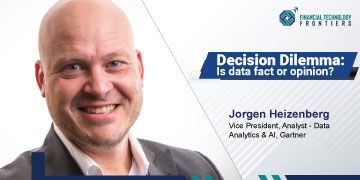Swedish bank Svenska Handelsbanken strongly believes that personal interaction is the key to successful customer engagement:

While banks in general adopt digitization as a means of bringing in efficiency, create better customer engagement and improve earnings, Swedish bank Svenska Handelsbanken approached it more as an opportunity to make use of alternate channels more effectively to conduct business transactions with customers. Its business model is built around the need to be available locally and to be able to do business with customers, regardless of the channel that the customers opt for. The theme is therefore to be digital and local.
Established in 1871, Handelsbanken is one of the major banks in Scandinavia and Europe. It has some 12,000 employees working in 800 branches in over 20 countries. Headquartered in Stockholm, it has strong presence in Sweden, the UK, Norway, Denmark, Finland, the Netherlands, the US, China, Singapore, Germany, France and Poland. The bank offers private, corporate banking solutions, serving individuals, corporate, SMEs, HNIs, and wealthy family clients.
LOCAL RELATIONSHIP BANK
In spite of its multinational nature of operations, the bank is essentially a local relationship bank. It believes that having a wide network of branches enables its advisors to have a better knowledge of the local markets, and a deeper and more personal connection with the customers, which in turn generates more business and more profits. It also lays stress on deeply understanding its customers, for this understanding can generate more profits. So, digitization for one thing, has not reduced the number of branches. On the contrary, branches have been strengthened and equipped with digital tools to understand the customers’ needs and meet them expeditiously.
The bank has highly decentralized operations. For it, ‘branch is the bank’. Each branch operates as a local business and is empowered to make the majority of banking decisions, giving it more flexibility to adapt to the local conditions and better relate to the customers. For customers, there are dedicated account managers who have expertise to help a customer make decisions based on financial requirements. Naturally, it is also important for the bank to provide a positive experience of the digital channels as well, since the majority of the customers handle their transactions there.
Unlike other banks taking up digital transformation, Handelsbanken considers the combination of digital tools and personal/local interaction as the true creator of value for the customers. And this is one of the distinguishing factors for the bank as in normal terms banks totally go for digital channels.
UNIQUE PHONE BANK APP
The bank has a phone bank app, which is an e-banking solution and the bank is keen on promoting this. What is unique about the app is that a customer accessing the app, gets a four-digit code and along with one’s social security number, one can log in. There is no need for any mobile bank id or password or OTP. Once logged in, the customer can speak to the bank officer, who is equipped to solve most of the likely issues.
The bank uses AI extensively. At the bank, AI is ‘Augmented Intelligence’. It makes use of AI in a major manner in offering investment advice. It has developed a tool based on IBM Watson to take care of the increased advisory business, which means reviewing more documents. The tool combines the capability of AI to assess and analyze text with NLP and the human capability to understand context and complexity to create the most efficient output.
LOCALISM A WINNER
It is a unique achievement for the bank that it has been consistently ranked No 1 in customer satisfaction for the last several years. Essentially, this is on account of the bank’s ‘localism’ policy. The bank does not have call centers or major marketing campaigns. A customer, whether he visits a bank branch or goes online, is always given a bespoke service that directly addresses his individual needs and financial situation.
The bank has a unique policy. It does not pay bonuses or offer financial incentives to performers or set targets for its people. Instead, the managers and staff are told to take care of the needs of the customers in a most effective manner. Monetary rewards are offered to all in the form of equal share of profits when the bank’s return on equity beats the competitors’.
So, is it not difficult to drive digitization in such an environment? The bank has successfully structured its transformation based on which decisions to be taken locally and which at the central level. It has overcome this dilemma by making transparency as a key element.
Nevertheless, the bank has recently announced that it would cut its branch network in Sweden, without affecting the existing levels of customer satisfaction. It depends on digital to take care of this aspect. It proposes to invest SEK1 billion (€87 million) in IT to take its digital customer offering to an entirely new level.
This article has been compiled based on publicly available information on the web, particularly the bank’s own website.
Read more-




